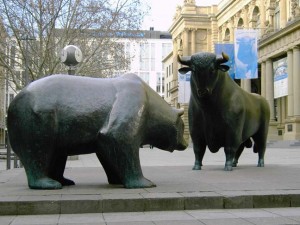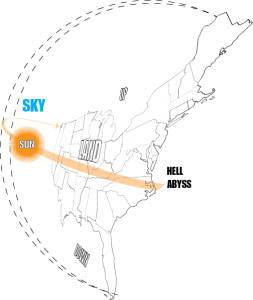The Late 20th and Early 21st Century Ancient North American (ANA) Peoples had interesting set of beliefs though all with some unifying factors. Each area of belief was fraught with disagreement yet a strong cohesive unity which indicated their shared identity. This being so, no generation in human history has proven as united as this one and thus easily able to be examined.
Science
Regarding their scientific advancements of the ANA, their opinions varied but it seemed that they were grounded more on pragmatics and beliefs rather than empirical data. For instance, although they would teach in their classrooms that the Earth revolved around the Sun, they continued to believe otherwise. They would refer to “Sunrise” and “Sunset” without a quibble reflecting the true mindset of the culture as a whole.
ANA believed in a tiered cosmology where sky was “up” and where rain “Fell” down—obviously not a clue of the forces of gravity or the three dimensional nature of the world. But more interesting (and disturbing) is how the culture would speak about location. They would drive “down” to Georgia or tell others to come “up” to their house thus indicating that they believed the world was both flat and vertically held and were completely confused about the actual location of the sky (which for some reason, they thought was “blue”). Was it Up There or Out There—no opinion was solidified.
As to what they believed was below the vertical world, we don’t know but based on some segments of the society saying “It smells like hell down here” and “keep it on the down low” and the like, we can only assume that there was a belief in either hell or an abyss.
Religion
Their religious ideals seem to be varied enough to fight for though they had a unifying set of rituals which indicates some sort of meta-belief system that they all adhered to. Some would rise in the morning to pray or to read their holy book but almost all of them rose to listen or read the prophetic utterances of the “Forecaster” who would dictate to them how they were to dress and when the Sun would “rise” and “set”; and even when rain would “fall”. Without nary of a thought of how this information was acquired, they would structure their day to day activity around such prophetic utterances of the “Forecaster” even in light of repeated failure.
Indeed, they would couple this activity of listening to the “predictions” with baptisms of the body (by sprinkling, not often by immersion which was a practice normally practiced by Mothers during the evening) and of the face. Some of the peoples, obviously offering their bodies as a sweet smelling aroma, would cap this process off by anointing themselves with various perfumes and fragrances.
Apparently the well off in the society worshipped a sort of heavenly shopping district (here depicted as a rising city) because they would start the day by reviewing how this Market would act, and then spend the day worrying about it falling or rising. Idols were attached to these processes (the Bull depicting the ascending City and the Bear depicting the descent).
Apparently, these beliefs trickled throughout the culture as they would refer to their leaders or slave-masters as “being on top” indicating a divine connection to The Market.

